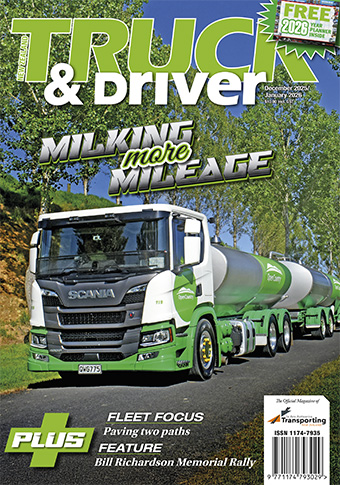
Disruptions Come at a Cost. Drivers and Operators Can’t Afford Endless Delays
Posted: 17-Oct-2025 |
Two incidents this week, one in the North Island, one in the South, highlighted how fragile New Zealand’s freight network remains, and the real people and business costs borne by operators every time a highway shuts down.
Behind every “patient” driver waiting in their cab is a business losing income, customers waiting for delayed goods, and a supply chain absorbing costs that might have been avoided.
Stuck in the cab, twice in one day
In the early hours of the morning, a number of trucks were caught in the Awakino Gorge on State Highway 3. Torrential rain triggered a slip that closed the road in front of them. Then another slip behind.
Drivers were stranded in the dark, between two landslides, waiting for diggers to arrive and clear a lane.
At NRC, we immediately sent out text advisories to members operating in the area, not just in Taranaki, but across the North Island. It’s what we do. But it doesn’t change the fact that these drivers were stuck for hours, with no food, no toilets, and no idea when they’d be able to move.
State Highway 3 is the only link between New Plymouth and the Waikato. When it closes, the detour to Hamilton is 350km. And it closes multiple times a year. That’s why NRC continues to push for effective resilience upgrades to be completed.
Meanwhile in Marlborough…
On the same day in the South Island, a fatal crash on State Highway 1 south of Ward involving three cars shut the road for nine hours. Several trucks were trapped at the scene. Not by nature, but by process.
The Serious Crash Unit has a tough job. They arrive with extensive equipment and must treat every fatality as a potential crime scene versus the scene of an accident. But when our largest freight route is closed for nine hours, the cost to the economy is enormous. Delayed deliveries, fuel burn, unpaid driver hours, and logbook limits all add up.
It would be interesting to weigh the number of road fatalities defined as unlawful over the last decade against the tens of millions of dollars in lost productivity for the economy. That’s not a rhetorical question, it’s a trade-off we’re making, whether we acknowledge it or not.
We need to do more to reduce the hidden costs of delay
NRC has called for virtual message screen sites at critical highway junctions to reduce the number of trucks caught in closures. It’s a start. But it doesn’t help those already stuck, or reduce the detours they face.
We need to think about protocols that protect both public safety and business continuity and look after the people who keep our supply chain moving.
Drivers have no choice but to stay with their vehicles and the loads they’re responsible for. They’re often left without basic necessities, and without information. This wouldn’t be acceptable in any other workplace – so why is it acceptable for truck drivers?
We’ve become too comfortable treating driver downtime as an unavoidable part of the job, rather than a productivity and wellbeing issue.
It’s time to challenge that thinking.
We need to look after the people and operators who look after us by delivering everything we need, every day.
Justin Tighe-Umbers, Chief Executive, National Road Carriers Assn



 + EQUIPMENT GUIDE - FREE
+ EQUIPMENT GUIDE - FREE
